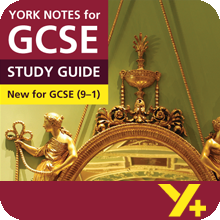Examiner's Notes
You assessed this answer as Grade 4.
Hover over the highlighted text to read the examiner’s comments.
Question: Explain the way in which ideas about friendship are explored in Pride and Prejudice. In your answer, you must consider:
- different friendships within the novel
- why these friendships are important.
Friendships are essential to the residents of the small world of Longbourn. They offer an escape from family and a different perspective to help characters make choices. Austen shows how friendship affects characters’ decisions, with friends having good and bad influences.
Elizabeth is a character for whom friendship and conversation are very important. Some of her closest friendships are with family members. One of the most important relationships in the novel is between Elizabeth and Jane Bennet. This is made clear early on in the chapters that describe their stay at Netherfield when Jane is ill, and Austen shows us many conversations between the sisters to emphasise their closeness. Similarly, Austen shows us her friendship with her aunt, Mrs Gardiner, who helps her to explore her relationships with both Wickham and Darcy in a more helpful way than her mother.
Elizabeth does have friends outside her family, however, most notably Charlotte Lucas Austen presents this friendship as complex through the different attitudes each woman has to love and to marriage. Charlotte believes that ‘happiness in marriage is entirely a matter of chance’, and when she accepts Mr Collins, it is because she needs some future security. Elizabeth, however, finds it hard to accept Charlotte’s choice because she thinks it is ‘humiliating’ and believes there can never be ‘real confidence’ between the friends again. Austen uses this friendship to reveal social and character differences, showing us the inner thoughts of both women.
The friendship between Darcy and Bingley is also complicated. We never see its true nature as Austen doesn’t show us their private conversations, unlike those between Elizabeth and her female friends. However, we know that Darcy advises Bingley on personal matters through Colonel Fitzwilliam, who tells Elizabeth about Darcy saving his friend from ‘a most imprudent marriage’. This suggests closeness. Later, Darcy himself explains to Elizabeth how easily led Bingley is. Although the friendship is positive and valuable, it’s clear who has the most power.
Not all of the friendships in the novel are as positive as these. Lydia’s friendship with Colonel Forster and his wife puts her in a tricky position. Miss Bingley appears to offer friendship to Jane, but it’s not real friendship – it seems to be something to amuse her while she stays at Netherfield with her brother. She is quick to drop Jane as soon as she thinks it no longer serves her interests.
Interestingly, Austen also offers us the possibility of friendship between men and women, first with Elizabeth and Mr Wickham, and then with Colonel Fitzwilliam. We only really see Elizabeth talking one-to-one with male characters who are not necessarily of romantic interest to her, perhaps showing her independence.
The novel ends with the promise of new friendships, such as that between Elizabeth and Georgiana Darcy. There is also the possibility of reshaping friendships as Miss Bingley learns to accept Jane. But the two most important friendships of the novel – between Jane and Elizabeth and between Darcy and Bingley – can only grow closer, with them living so close together. Austen ends the whole novel with the friendship of the Gardiners who have brought Darcy and Elizabeth together, emphasising the value of friends and ‘gratitude’ for ‘intimate’ friendships.
